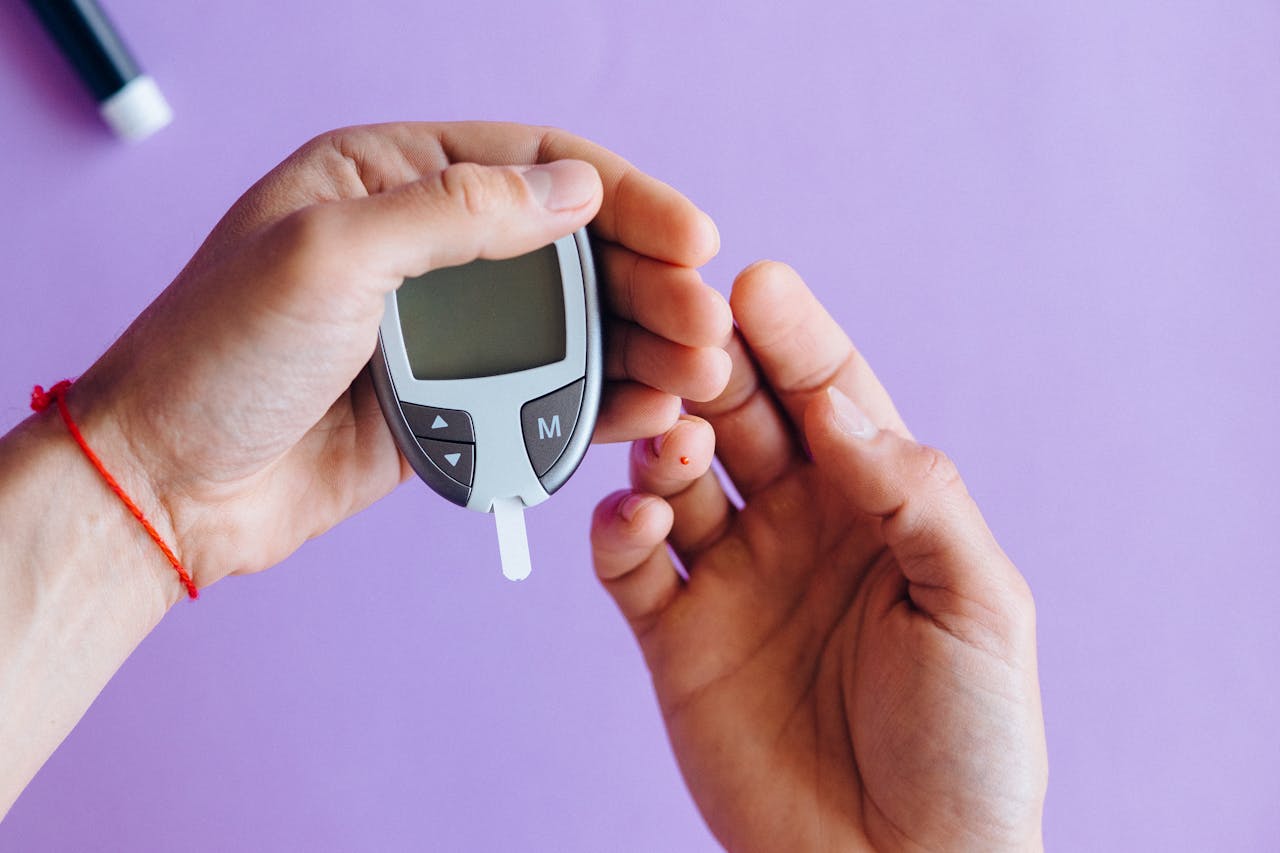Tylenol in pregnancy is a common choice, and it's good to weigh the benefits and risks. Some studies link acetaminophen during pregnancy to higher rates of developmental disorders, but they don't prove it's the cause. The evidence is mixed and still being studied. For you, treating a high fever or severe pain can be safer than not treating it. Use the smallest dose that works for the shortest time and avoid mixing products with acetaminophen to prevent serious liver damage. Talk to your doctor or provider about regular use.
Key Takeaways:
- Acetaminophen (Tylenol) is still the go-to over-the-counter choice for pain and fever in pregnancy when needed and used carefully.
- Studies showing links between acetaminophen during pregnancy and autism are mostly based on observation and are mixed. A link has been seen, but it's not proven that acetaminophen is the cause.
- Use the smallest dose that works for the shortest time. Avoid daily use unless your doctor guides and watches over you.
- Treat a high fever or severe pain during pregnancy. These conditions can harm a developing baby and may be a bigger risk than using acetaminophen for a short time.
- Check labels to avoid using multiple products that have acetaminophen, follow recommended daily limits (often ≤3,000–4,000 mg/day), and talk to your OB or pharmacist if you use it regularly.
Understanding Acetaminophen
You’ve already seen acetaminophen called the “safe” choice for pain and fever in pregnancy. This section looks at how the drug actually works in your body, why that matters for what the baby is exposed to, and what safety concerns researchers are watching for. Medical advice considers two things: acetaminophen is widely used and works well for lowering fever quickly, and it crosses the placenta, so any repeated concern found in large studies needs a close look.
Because it's used so much, even small risks are important. Studies guess that about 50–65% of pregnant people take acetaminophen at some point during pregnancy. That's why experts look at these findings differently than they would for a drug that is rarely used. Your own risk depends on how much you take, for how long, and why you took it.
What is Acetaminophen?
When you take acetaminophen (paracetamol), it’s quickly absorbed from your stomach and starts working in about 30–60 minutes. It typically stays in your system for about 2–3 hours. Its pain-relieving and fever-reducing effects are believed to work in the brain. Unlike NSAIDs (like Advil), acetaminophen does not significantly affect blood clotting or cause risks to a baby’s heart, which is why it is generally considered safer for pain and fever relief in pregnancy compared to NSAIDs.
Your liver mainly processes it. A small amount is turned into a substance that can be harmful. At normal doses, your body gets rid of this substance safely, but with an overdose or repeated high doses, you can get serious liver damage. Typical single doses range from 325–1,000 mg and many guidelines say to keep your total daily amount below 4,000 mg in 24 hours (some recommend <3,000 mg/day as a safer limit). Never mix multiple products that contain acetaminophen.
Historical Context in Pregnancy
For decades, doctors have long preferred acetaminophen as the go-to OTC option for pregnant people when pain relief or fever control is needed, largely because it avoids the known risks to the baby from NSAIDs (like a heart issue in late pregnancy). Groups like the American College of Obstetricians and Gynecologists (ACOG) have long supported its short-term use at the lowest effective dose, especially to treat a high fever, which itself can increase the risk of birth defects if not treated.
This long-held view became a public debate after several large studies reported links between taking acetaminophen during pregnancy and small increases in diagnoses like autism and ADHD. The FDA has said it will update labels with new information, while drug makers and many doctors note that these studies show a link, not a cause and might be influenced by the reason the medicine was taken in the first place.
More detail: large studies have reported a small increase in risk for some outcomes, with the link being stronger the longer it was used. Studies that account for family factors often find the link gets weaker or disappears, supporting the idea that other things (like the fever, infection, or family genetics) may explain the link you've read about.
Current Research Landscape
Observational Studies
You’ll find most of the information comes from large, long-term studies where researchers report links between taking acetaminophen during pregnancy and higher rates of conditions like ADHD and autism spectrum disorder. The reported effects are usually small, and the actual increase in risk is often small, but several papers found a consistent signal across different groups. Some studies add details like timing, how many days it was used, and the dose, and those that report stronger links often note a pattern where more use was linked to a stronger effect. You should balance those findings with the study's limits: what a mother remembers taking, how conditions are diagnosed can be different, and many links get weaker when family and genetic factors are looked at more closely.
Confounding Factors
The reason for taking the medicine is a big issue in understanding the results. The illness (like a fever or infection) that made you take acetaminophen could be what affects the baby's development. Studies that account for a mother's infection or fever usually see the effect get smaller, and studies comparing siblings often weaken or get rid of the link.
Mistakes in remembering how much was taken add to the uncertainty. Taking other drugs at the same time makes it hard to know what caused what. You also have to think about shared family risks like genetics, family income, and a mother's mental health. Many studies only partly account for these, leaving room for leftover factors that could influence the results.
Digging deeper, timing matters. Some studies suggest that taking it only in the third trimester is different from taking it in the first trimester or throughout pregnancy. You should be careful about single-study headlines because differences in how studies are done explain a lot of the variation.
- Reason for taking it
- Mistakes in remembering use
- Other influencing factors
- Timing and dose
- Sibling comparison
Understanding these details helps you put headlines into context and talk with your doctor about what the evidence really means for your care.
Professional Guidelines and Recommendations
Major health groups have taken a careful approach. Most continue to support acetaminophen as the go-to over-the-counter choice for pain and fever in pregnancy when used at the lowest effective dose for the shortest possible time. Newer studies, like one mentioned by Harvard, have led to calls for clearer labels and more research, not a complete ban.
You should expect advice to change over time. The FDA has mentioned updating labels to show the difference between a link and a proven cause, while health groups stress balancing these possible risks against the known harms of an untreated fever or severe pain during pregnancy.
ACOG and FDA Stances
ACOG still recommends acetaminophen as the first choice for pregnant patients who need to reduce a fever or get short-term pain relief, advising the lowest effective dose and shortest duration. They stress that these links in studies are not proof and that treatment decisions should consider why you took it (for instance, an infection could be the real issue).
The FDA has publicly noted the new studies and said it will update labeling to inform doctors and patients about the current evidence, while also saying the data do not prove it's the cause. Things you should do include checking doses carefully (many guidelines recommend staying below 3,000–4,000 mg in 24 hours from all sources) and discussing any long or repeated use with your OB or pharmacist.
Risks of Untreated Conditions
A fever during pregnancy, especially a high one in the first trimester, has been linked to a higher risk of some birth defects in some studies, so leaving a high fever untreated can be risky for the baby. Severe or long-lasting pain and untreated infections increase a mother's stress, can worsen sleep and diet, and have been linked to more hospital stays and problems like preterm birth.
For example, the flu during pregnancy raises the chance of needing intensive care and having a preterm delivery. Untreated UTIs increase the risk of a serious kidney infection and harm to both mother and baby. Those situations often require specific treatment beyond acetaminophen, such as antivirals or antibiotics.
Balancing these risks means you and your doctor should weigh the possible, still-unclear signals from studies against the known dangers of an untreated high fever, severe pain, or an active infection. In many cases, treating the main condition and using acetaminophen for a short time when needed is the safer choice.
Practical Safety Tips
Manage pain and fever in pregnancy by using the lowest effective dose for the shortest time needed and by treating high fevers right away (a steady temperature of 100.4°F (38°C) or higher needs attention). Many people choose acetaminophen because it avoids the risks to the baby's circulation tied to NSAIDs late in pregnancy, but you must still watch the total amount. Avoid going over 4,000 mg in 24 hours from all sources and try to stay below 3,000 mg when possible to reduce the risk of liver damage.
Track what you take and check labels carefully. Multi-symptom cold or sleep products often contain acetaminophen and can push you past safe limits without you knowing it. If you find yourself needing pain relief most days, find out the underlying cause and ask your OB or pharmacist about other options. Accidental overdose causing serious liver damage is a top preventable harm.
- Confirm product strength: regular = 325 mg, extra strength = 500 mg.
- Single-dose examples: 1–2 tablets of extra strength (500–1000 mg) every 4–6 hours as needed. Do not go over the daily maximum.
- Avoid alcohol while using acetaminophen. Using them together raises the risk of liver damage.
- Limit use to a few days for minor pain. Get medical care if your symptoms continue beyond 48–72 hours.
Dosage Recommendations
Standard adult dosing ranges from 325 mg to 1,000 mg for a single dose, typically every 4–6 hours as needed. Extra-strength tablets are often 500 mg, so two tablets equal a 1,000 mg dose. Multiple doses should never push you past 4,000 mg/24 hr, and many doctors advise staying under 3,000 mg/24 hr in pregnancy to add a safety margin.
If you need repeated doses for more than a couple of days, talk to your OB or pharmacist so they can check the cause and maybe watch your liver function if needed. Pregnant people with existing liver disease, heavy alcohol use, or those on medicines that affect how acetaminophen is processed need personal limits and follow-up.
Avoiding Overuse
Avoid taking acetaminophen daily or for a long time on your own. Long-term use increases the chance of it building up and causing liver damage. Non-drug options like ice, heat, physical therapy, or fixing your posture can reduce the need for medicine. Watch for early warning signs of liver problems, like lasting nausea, stomach pain, dark urine, or yellowing skin, and get help quickly if they show up.
Check your medicines whenever a new one is added. List everything you take, ask a pharmacist to check for products with acetaminophen, and avoid mixing products that add hidden doses. If pain or fever is ongoing and you find yourself using acetaminophen every day, ask for a medical review for other options and to be monitored. This is why you should always review all medicines and discuss lasting use with your OB or pharmacist.
Maternal Perspectives and Concerns
The Psychological Impact
You may feel very guilty when headlines link taking acetaminophen during pregnancy to developmental outcomes. That feeling is common and understandable. Some studies report modest links. For example, if the baseline risk of autism is about 1.5%, a 20% increase would mean a risk of about 1.8%. Seeing the actual numbers can help reduce the "what if" worries that lead you to avoid treatment.
You might change how you treat common symptoms. Not taking acetaminophen for a fever or severe pain can cause other problems, since a high fever early in pregnancy has its own risks and untreated pain can lead to trips to the emergency room. Many parents I talk to describe losing sleep, being overly watchful, and constantly searching for reassurance. Tracking doses, keeping a medication log, and bringing that log to your prenatal visits can lower anxiety and give your doctor or provider solid information to work with.
The Role of Informed Decision-Making
You should have a talk that balances the new, limited evidence with your personal situation, including the dose and length of use, the reason for taking it (fever vs. headache vs. chronic pain), other health issues like liver disease, and what trimester you are in. Practical advice I give patients includes following the label dosing (single doses often 325–1,000 mg every 4–6 hours), keeping the total daily amount below 3,000–4,000 mg in 24 hours depending on your provider’s advice, and getting care if you need medicine daily for more than a few days.
Bring details to your doctor. Note exact doses, timing, and symptoms (for example, “I took 500 mg acetaminophen three times a day for a fever of 102°F for two days”). Ask if other strategies might work, like treating an infection, physical cooling measures, or seeing a pain specialist for long-term conditions. Making the decision together should also include talking about the limits of these studies so you and your provider can weigh the small possible risk from these studies against the immediate dangers of an untreated fever or uncontrolled pain.
The Future of Tylenol Research
Ongoing Studies
Several large studies are being updated now, each with well over 100,000 pregnancies, which makes it easier to spot small effects and look at dose patterns. You’ll see more studies using sibling-comparison designs to try to separate the drug's effect from the illness that it was used for. These methods have already made the link look weaker in past studies and will be used more widely.
Researchers are also getting better data by measuring acetaminophen in blood samples instead of just relying on memory, and using genetic tools to check if it's a direct cause. Lab and animal studies are looking at how it might work in the body, so you’ll eventually have a better picture that connects the population studies to biology, rather than just relying on links alone.
Potential Shifts in Recommendations
The official wording is already changing. The FDA has mentioned updates to labels and advice for doctors, and health groups may give stricter advice by stressing shorter use and lower daily limits (many experts now suggest staying under 3,000 mg/day when possible). You should expect advice that separates one-time use for a fever from daily use for pain, with stronger recommendations to talk to your OB or a pain specialist if you’re taking acetaminophen regularly for weeks.
Public health messages could change to give clearer instructions on tracking total daily acetaminophen from all sources and avoiding combination cold medicines that hide how much you're really taking. That kind of change would aim to reduce the real, known danger of accidental overdose and serious liver damage while still keeping it available for treating high fevers in pregnancy, a situation where the benefit is clear.
If you’re managing pain or fever now, practical changes you might see include standard questions from your doctor (asking about how long and how often you take it), earlier referrals for non-drug treatments (physical therapy, treating the underlying condition), and better notes in your prenatal records about why you took it so researchers can better account for the reason it was taken. Those steps would help doctors and you make safer, more personal decisions as the evidence changes.
Summing up
So, you should know that current research shows some links in studies between taking acetaminophen (Tylenol) during pregnancy and developmental outcomes but does not prove it is the cause. Major health groups for pregnancy still support acetaminophen as the go-to over-the-counter choice when needed, as long as you use the smallest effective dose for the shortest time needed and treat a high fever or severe pain rather than leaving it untreated.
When you need relief, use the smallest effective dose, avoid daily use unless a doctor is supervising you, check product labels to prevent taking it from multiple products by accident, and talk with your OB or pharmacist if you are using it regularly or have concerns. Studies are ongoing and advice may change, so follow the personal recommendations you receive for your pregnancy.
FAQ
Q: Is Tylenol (acetaminophen) considered safe to use during pregnancy?
A: Most major pregnancy health groups still recommend acetaminophen as the go-to over-the-counter pain reliever and fever reducer in pregnancy when needed, because it does not carry the same risks to the baby as NSAIDs. Safety depends on using the smallest dose that works for the shortest time, avoiding daily use unless your doctor guides you, and not going over recommended daily limits from all sources.
Q: Do studies show that Tylenol use during pregnancy causes autism or ADHD?
A: Current research is mixed and based on observation. Some studies report links between taking acetaminophen during pregnancy and higher rates of these conditions, while better-controlled studies (including comparing siblings) weaken or remove those links. These studies can be affected by other factors (like the illness or fever that led to taking medicine), so a link doesn't mean it's the cause. Experts call for more research and to be careful in reading the results.
Q: How should I use acetaminophen safely if I am pregnant?
A: Use the lowest dose that relieves your symptoms and stop as soon as you can. Common advice is to limit total acetaminophen to no more than 4,000 mg in 24 hours, but many doctors and pharmacists advise staying below 3,000 mg/day when possible and checking labels because many combination medicines also contain acetaminophen. Don't mix products that both have acetaminophen, avoid long-term daily use unless your doctor is supervising, and ask your OB or pharmacist if you are unsure about the dose or how long to take it.
Q: What should I do if I have a fever or significant pain during pregnancy?
A: A fever, especially early in pregnancy, and untreated severe pain can be harmful and should be treated. Acetaminophen is often the safest quick option to lower a fever. Get medical advice quickly if a fever is high or won't go away, or comes with other worrying symptoms, so the cause can be found and treated.
Q: I took acetaminophen during pregnancy — should I be worried and what follow-up is recommended?
A: Taking it for a short time, as directed, is unlikely to be harmful based on what we know now. There is no proof that it is a direct cause of developmental issues. If you used acetaminophen regularly, at high doses, or for long periods during pregnancy, discuss it with your OB or a pharmacist. They can address your concerns, your child's development can be watched as needed, and other ways to manage pain can be looked at for the future.










